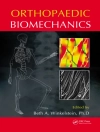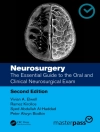The management of pain can often be achieved by medications, physical therapies, or by various procedural techniques that have evolved in recent decades. With the trend towards more outpatient surgeries and less invasive surgeries to decrease perioperative risk, perioperative time, and costs, the practice of anesthesia is evolving to utilize regional anesthesia techniques both for inpatients and outpatients. Regional anesthesia is being performed for outpatient surgeries, obstetric anesthesia, trauma, chronic pain states, and for acute post-operative pain management. Therefore, it is paramount for physicians and nurses practicing anesthesia to understand the essentials of regional anesthesia, its evolving techniques, and appropriate utilization of modern equipment and technology to provide care safely.
Essentials of Regional Anesthesia, Second edition, is a concise, up-to-date, evidence-based handbook that enables every resident, physician and nurse to understand the basics of regional anesthesia and the standard of care guidelines for the practice of regional anesthesia in a comprehensive fashion. This new edition includes:
· Updated and new chapters on Ambulatory, Critical Care, and Obstetrics topics
· Full color, clear, detailed, anatomic drawings
· Clinically relevant, practical aspects of regional anesthesia
· International contributing authors who are experts in their field
· Latest ultrasound techniques and images
Review of 1st edition:
“There are many books available on regional anesthesia, and the trend is either to focus on illustrations, forgoing any discussion, or on text descriptions, making them bulky and hard to read. This book maintains that perfect balance between text and illustrations. It is truly a master companion book on regional anesthesia.” (Tariq M. Malik, Doody’s Book Reviews, April, 2012)Cuprins
Part I General Principles of Regional Anesthesia Practice.- Chapter 1. General Considerations for Regional Anesthesia Practice.- Chapter 2. Economic Impact, Cost, and Reimbursement Issues.- Chapter 3. Training and Education of a Physician for Regional Anesthesia.- Part II Basics and Clinical Practice in Regional Anesthesia.- Chapter 4. The Anatomy of Pain and Its Implications for Regional Anesthesiology Practice.- Chapter 5. Local Anesthetics and Adjuvants.- Chapter 6. Monitoring and Sedation in Regional Anesthesia.- Chapter 7. Anticoagulation and Regional Anesthesia Concerns.- Chapter 8. Regional Anesthesia in the Community Practice Setting.- Part III Ultrasound-Assisted Nerve Blocks.- Chapter 9. Ultrasound-Guided Peripheral Nerve Blockade.- Part IV Continuous Regional Analgesia and Techniques for Regional Anesthesia.- Chapter 10. Equipment and Clinical Practice: Aids to Localization of Peripheral Nerves.- Chapter 11. Neuraxial Blockade: Subarachnoid Anesthesia.- Chapter 12. Neuraxial Blockade: Epidural Anesthesia.- Chapter 13. Peripheral Nerve Blocks for the Lower Extremity.- Chapter 14. Regional and Topical Anesthesia for Endotracheal Intubation.- Chapter 15. Regional Anesthetic Techniques for the Pediatric Patient.- Chapter 16. Head and Neck Regional Anesthesia.- Chapter 17. Upper Extremity Nerve Blocks.- Chapter 18. Local Anesthesia of the Masticatory Region.- Chapter 19. Regional Anesthetic Techniques for Foot Surgery.- Chapter 20. Selective Regional Anesthesia Options in Surgical Subspecialties.- Chapter 21. Obstetric Anesthesiology.- Chapter 22. Acute Situations: Trauma in Surgical Specialties.- Chapter 23. Preemptive Analgesia, Regional Anesthesia and Prevention of Chronic Postoperative Pain.- Chapter 24. Transverse Abdominal Plane, Pectoral and Serratus Plane, and Quadratus.- Part V Regional Anesthesia and Subspecialties.- Chapter 25. Outpatient Surgery.- Chapter 26. Regional Anesthesia in the Critical Care Setting.- Part VI Regional Anesthesia for Chronic Situations.- Chapter 27. Regional Anesthesia for Chronic Pain.- Chapter 28. Regional Anesthesia Considerations for Chronic Non-cancer Pain.- Chapter 29. Malignant Pain.- Chapter 30. Regional Anesthesia and Cardiovascular Disease.- Chapter 31. Regional Anesthesia in the Patient with Preexisting Neurological Disease.- Chapter 32. Sympathetic Blockade.- Part VII Outcomes Studies in Regional Anesthesia.- Chapter 33. Outcome Studies and Infection Control in Regional Anesthesia.- Chapter 34. Acute Pain Management.- Chapter 35. Regional Anesthesia for Chronic Disease States.- Chapter 36. Intravenous Regional Anesthesia.- Chapter 37. Pediatric Pain.- Part VIII Future Trends in Regional Anesthesia.- Chapter 38. Future Trends in Equipment.- Chapter 39. Future Trends in Regional Anesthesia Techniques.
Despre autor
Alan David Kaye, MD, Ph DProfessor and Chairman Department of Anesthesiology Tulane University School of Medicine Director of Pain Services University Hospital and Ochsner Kenner Hospital New Orleans, LA 70112 USA
Richard D. Urman, MD, MBAAssistant Professor of Anesthesia, Harvard Medical School Director, Hospital Procedural Sedation Management and Safety Co-Director, Center for Perioperative Management and Medical Informatics Brigham and Women’s Hospital Boston, MA 02115 USA
Nalini Vadivelu, MDAssociate Professor of Anesthesiology Yale University School of Medicine New Haven, CT 06510 USA












